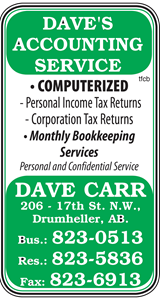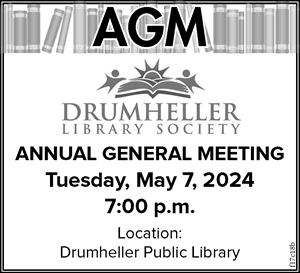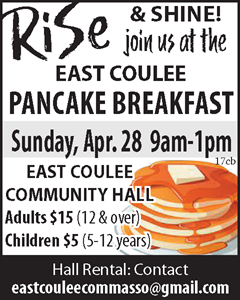
Since the introduction of Alberta’s .05 maximum for drinking drivers, the province has seen a rise in the increase of driver impairment from other causes.
“Lots of people don’t want to drink and get behind the wheel, because they know that’s what we’re testing for these days,” said Drumheller RCMP Constable Lucas Stewart, “but they have no problem having a drug of choice, and getting in and going for a drive.”
Stewart has served in Drumheller about three and-a-half years, and has been a Drug Recognition Expert (DRE) during that time. He is one of at least 60 such DREs in different agencies across Alberta. In this area of police work, he has noticed drivers having difficulty because of incorrect use of their prescriptions.
“A lot of people think prescription medication, if it’s prescribed by a doctor, it’s safe to take and drive. That’s okay as long as you’re following your doctor’s directions, but a lot of people don’t. Whether that’s taking too much, or not enough and doubling up the next day.”
He said people often don’t realize there’s a problem with their prescription medication until it’s brought to their attention, often through a driving complaint and subsequent RCMP drug testing.
“Whether you meant to or not, you should know that you shouldn’t be behind the wheel if you’re not feeling 100 per cent,” said Stewart.
Police are also concerned with young people taking their parents prescriptions, which happens here occasionally, but Stewart said the problem is more commonly found in larger centres. He said the RCMP urge parents to keep their prescriptions locked up or out of reach of their children, because often kids don’t realize the dangers of taking someone else’s medication.
“It’s really very sad when you’ve got a 16 or 17 year-old driver that’s just run somebody over on the highway because they didn’t realize what these drugs were going to do to them.”
He also said impaired drivers suffering from a lack of sleep and fighting to stay awake happens way too often. He said it’s hard to get accurate numbers, because often drivers won’t admit they fell asleep behind the wheel.
“At some point, someone gets in a situation where they shouldn’t be behind the wheel and they know it. Lots of people fight it - that’s usually a mistake.” Drivers can often fall asleep for a split-second and not realize it, said Stewart, especially on longer trips, and that’s often all it takes for disaster.
And Stewart said different street drugs impair drivers in difffrent ways. Methamphetamines and cocaine are considered uppers, making drivers hyperactive, and could make people drive aggressively.
On the other end of the scale, he notes narcotics, such as morphine and heroine, and also methadone - used to help people addicted to opioid drugs such as OxyContin, Dilaudid, heroin - are considered downers, and can almost put people to sleep.
He said RCMP members have arrested drivers after complaints of vehicles going 15 kilometres an hour on the highway. If a driver fails a roadside impairment check, testing of suspected drug impaired drivers at the RCMP detachment shows Stewart the effect of the drug on the person, giving him indications of what type of drug he should be looking for.
“It (impairment) comes in any shape or form - we have to be trained and know to look for just about everything.”



























